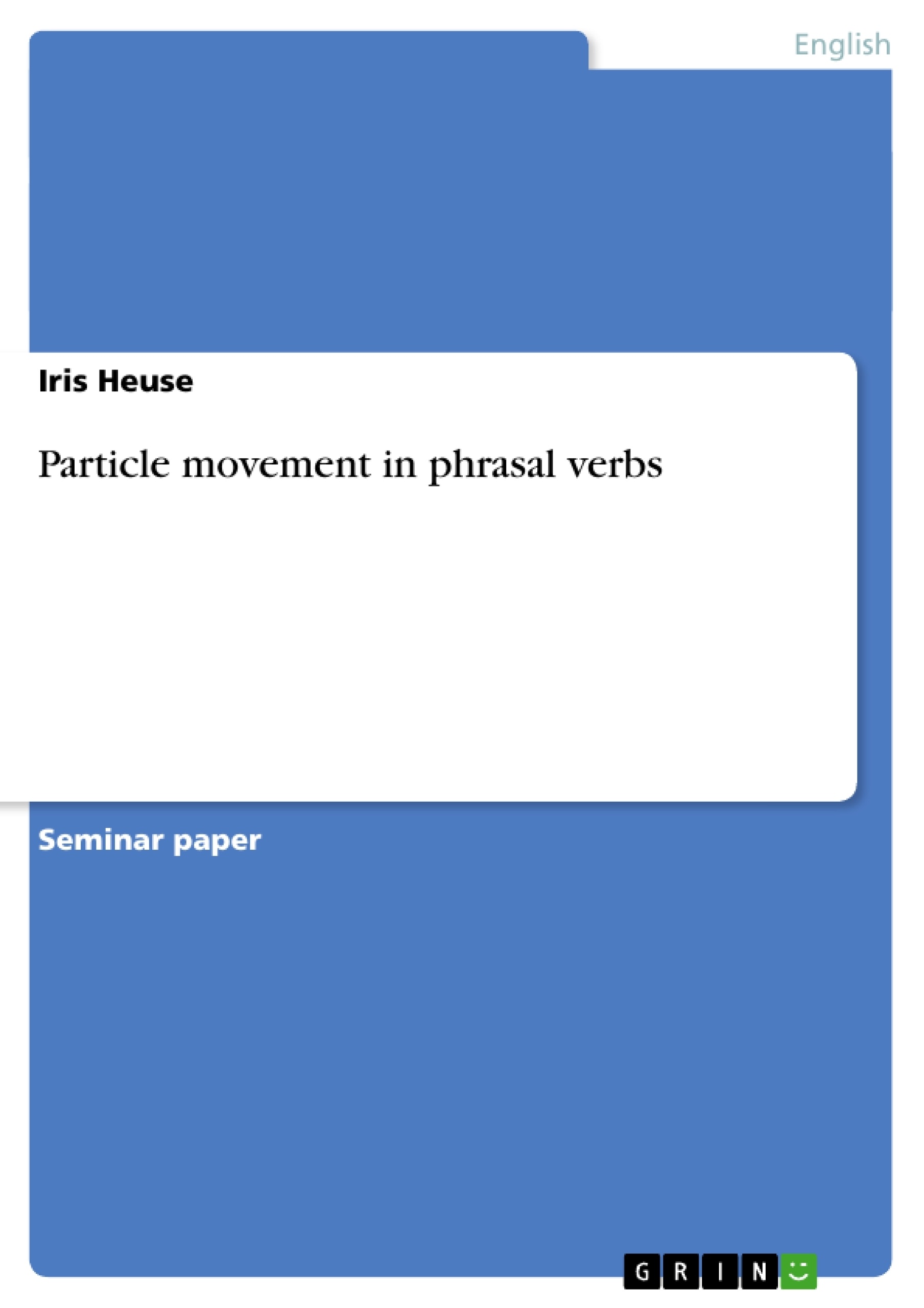Die Phrasal Verbs des Englischen bestehen aus einer Einheit von Verb und adverbialem Partikel. Dieser Partikel kann vor oder hinter dem direkten Objekt stehen. Mit wissenschaftlichen Berechnungen lässt sich nun herausfinden, wann der Partikel vor, und wann er hinter dem Objekt steht. Wie in den meisten Fällen gibt es keine absoluten Regeln, aber Tendenzen können aufgedeckt werden.
Inhaltsverzeichnis (Table of Contents)
- 1.1 Introduction
- 1.2 Review of literature
- a) Type of NP:
- b) Length of object:
- c) Idiomaticity
- d) Directional adverbials
- e) Animacy
- 1.3 Questions to be answered
- 2. The data
- a)
- b)
- c)
- 3. Results
- a)
- b)
- c)
- d)
- e)
- 4.) Discussion
- a)
- b)
- c)
- d)
- e)
- 5. Conclusion
Zielsetzung und Themenschwerpunkte (Objectives and Key Themes)
This research paper aims to examine factors that influence the placement of the particle in phrasal verbs. It delves into the literature on particle movement, highlighting existing knowledge and identifying gaps that require further investigation. The paper seeks to answer specific questions regarding the placement of the particle in relation to different types of direct objects, object length, idiomaticity, directional adverbials, and animacy.
- Particle movement in phrasal verbs
- Influence of direct object type on particle placement
- Role of object length and idiomaticity in determining particle position
- Impact of directional adverbials and animacy on particle movement
- Analysis of data from the British National Corpus to explore these factors
Zusammenfassung der Kapitel (Chapter Summaries)
The paper begins with an introduction that defines phrasal verbs and outlines the research objectives. It then delves into a review of literature, exploring existing research on particle placement. The literature review examines various factors that have been identified as influencing particle movement, including the type of noun phrase constituting the direct object, the object's length, the degree of idiomaticity, the presence of directional adverbials, and the animacy of the object.
The next section outlines the data used in the study, which consists of 403 examples of phrasal verb constructions with direct objects from the British National Corpus. The data is categorized based on various criteria, including the type of noun phrase, the length of the direct object, and the level of idiomaticity. The paper further details the methodology used to analyze the data, including coding procedures and statistical analyses.
The results of the analysis are presented in a separate chapter, followed by a discussion that interprets the findings and explores their implications for understanding particle movement in phrasal verbs. The discussion examines the relationships between the various factors identified in the literature review and the observed patterns in the data.
Schlüsselwörter (Keywords)
The main keywords and focus topics of the text include: phrasal verbs, particle movement, direct object, type of NP, length of object, idiomaticity, directional adverbials, animacy, British National Corpus, empirical research, syntactic analysis.
- Quote paper
- Iris Heuse (Author), 2004, Particle movement in phrasal verbs, Munich, GRIN Verlag, https://www.grin.com/document/29364



